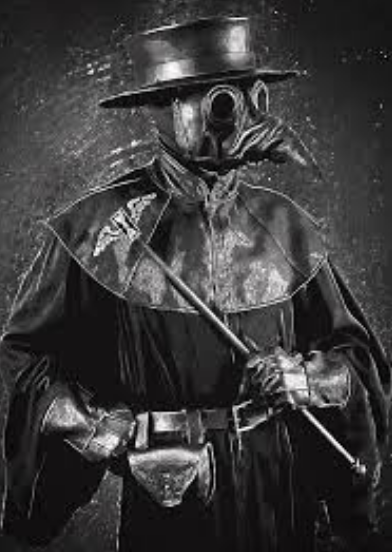Halloween Story: The Plague Mask
+ Medieval Plague Suits
The bubonic plague is synonymous with pain, suffering and death. The disease is responsible for at least three global pandemics, including the Black Death in the 14th century. The Black Death claimed over 100 million lives, it actually reduced the global population by more than 20%. The death toll was so great that it took nearly 200 years for the human population to fully recover.
It was during the Black Death that the plague doctor profession came to be. These physicians were typically hired by a city or town to treat all its residents, rich or poor. The prevailing “science” of the day concluded that the plague was spread by pestilential miasma (disease ridden air). That’s right, the disease was thought to spread by a foul odor. So it made sense that prevention and treatment methods often included burning juniper, dried herbs, and other plants with pleasant aromas. However, other treatments were truly medieval...bloodletting (the act of cutting a patient to cure them through blood removal) was a regular practice, and so was placing frogs or leeches on open sores. Needless to say, the arrival of the plague doctor did little to quell the Black Death. Results aside, they were highly valued throughout Europe for the next 300 years or so.
Fast forward to the 17th century, the medical science on how to treat the plague didn’t really advance much. Plague doctors still practiced the burning of pleasant aromas, bloodletting, and whatever that thing is with the frogs. Around 1619, a French physician named Charles de l’Orme developed the plague doctor suit to protect himself when he visited the sickest of his patients. The suit consisted of a waxed leather overcoat, hat, cane, and the beak. It is said that the wax coat protected doctors from touching patients, the cane was used to direct orderlies or keep patients at a distance, and the hat...well the hat was just the fashion of the time. The infamous beak was made to protect the physician from the notorious foul smelling odors while they examined the patient and it was typically filled with herbs, perfume, juniper or other pleasant aromas. The suit became a hit with physicians in Europe and plague doctors came to be affectionately known as beak doctors.
The “Great Plague” in 1665 London helped cement the plague suit’s status in modern lore. The plague wreaked havoc on the city, killing 100,000 (20% of London’s population) in 18 months. Victims were buried in vast plague pits to prevent the spread of the disease, but they soon filled so residents resorted to stacking bodies against walls on the streets. Some in power thought the plague was transmitted by animals, so the city ordered dogs and cats to be culled. Which only made things worse...we know today that rats helped transmit the plague. With fewer cats and dogs to keep the rat population under control, sickness and death spread to all parts of London. It wasn’t until the city ordered a quarantine of all infected residents that disease slowed and eventually ended.
In the end, foul odors didn’t cause the bubonic plague, bloodletting and frogs didn’t ease symptoms, and plague doctors didn’t eradicate the disease. Plague masks have been relegated to museums and halloween garb. The bubonic plague still lives but we know to treat it with antibiotics. We know that rats help spread the disease so we keep rodent populations down. We also know fleas are responsible for the transmission to humans...history, it seems, isn’t without a sense of irony - Juniper was often burned or stuffed in plague masks to combat foul odors, oh but it could’ve done so much more! Juniper is a natural flea repellent.
Happy Halloweekend from all of us at Simplicity!
Don’t forget to sign up for our email newsletter.






